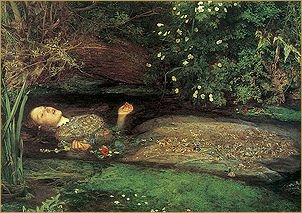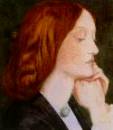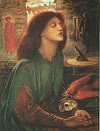 Last night I was looking on how to re arrange all my prints in my living room after I paint it in time for christmas.All of them are framed in spectacular guilded frames with equally spectacular images. Most are of pre-raphaelite and Klimt women. Staring at them reminded me of my time visiting and living in the uk and wonderful memories of the museums, galleries and of course cemetries old blighty has.
Last night I was looking on how to re arrange all my prints in my living room after I paint it in time for christmas.All of them are framed in spectacular guilded frames with equally spectacular images. Most are of pre-raphaelite and Klimt women. Staring at them reminded me of my time visiting and living in the uk and wonderful memories of the museums, galleries and of course cemetries old blighty has.I visited Highgate Cemetery in London several times - The first time upon visiting is overwhelming . Because I visited late afternoon in autumn many of my photos where hindered by a lack of light, but I made the most of it. The whole post-gothic Victorian necropolis is under siege by nature and every since then my regard for modern cemetries is viewed with almost clinical emotions, they are holes with boxes and markers where as somewhere like highgate and kensel green almost seems like a spiritual home to those 'who fell asleep' there, carpeted in Ivy, the wildlife in abundance gives the place a peaceful hive of activity - just before entering the Circle of Lebanon (a huge neo-Egyptian mausoleum complex)there lies a grave of a woman who's story drew me to the place. I had known highgate from many things, the almost focal location to many of the hammer films of the 70s to the 'vampire legend' that Sean Manchester was shamed for in the tabloids of that era too. But for more reason I had to see where one of the most famous and beautiful artists muse's of the pre-raphaelite movement lay.It was prehaps the most tragic love story of the victorian era about this truly unhappy woman who inspired, loved, and was loved by Dante Gabriel Rossetti.
 Lizzie Siddal was brought up in London, the daughter of a Sheffield cutler who had moved South. Her father seems to have been a self-employed small businessman. She was first spotted by Walter Howard Deverell an associate of the Pre-Raphaelites working in a milliners shop. Deverell was so taken with her striking appearance, that he enlisted the aid of his mother to recruit Lizzie as a model. She became a favourite early model of the Pre raphaelite brotherhood, who referred to her as ‘Guggums’ or ‘ The Sid.’ I had to laugh when reading this , seems like the brotherhood where bit of barrow boys at heart, and for their day they where treated with the reverence and fervour of rock stars.
Lizzie Siddal was brought up in London, the daughter of a Sheffield cutler who had moved South. Her father seems to have been a self-employed small businessman. She was first spotted by Walter Howard Deverell an associate of the Pre-Raphaelites working in a milliners shop. Deverell was so taken with her striking appearance, that he enlisted the aid of his mother to recruit Lizzie as a model. She became a favourite early model of the Pre raphaelite brotherhood, who referred to her as ‘Guggums’ or ‘ The Sid.’ I had to laugh when reading this , seems like the brotherhood where bit of barrow boys at heart, and for their day they where treated with the reverence and fervour of rock stars.
The first really famous painting in which Lizzie appeared was Ophelia, by John Everett Millais. The subject of the painting is Ophelia, in Shakespeare’s Hamlet drowning herself, after Hamlet’s murder of her father. Millais purchased a lady’s dress of great age for the large sum of £4.00, and Lizzie posed in it lying in a tin bath full of water. To heat the bath, the painter placed it on tressles with oil lamps underneath. Unfortunately the preoccupied painter failed to realise the lamps had gone out. The water then went cold, and poor Lizzie caught a bad cold due to the low temperature of the water. The painting is quite simply one of the greatest produced anywhere in the 19th century. Unlike some other images, seeing it ‘in the flesh,’ is not a disappointment. It is worth noting that Rossetti’s brother William, a good judge, was of the opinion that it was the best actual likeness of Lizzie Siddal ever produced. William Rossetti later described her as'most beautiful, with an air between dignity & sweetness'.
 She was also a model for William Holman Hunt. Shortly after this, however, the relationship between Lizzie and Rossetti deepened, and henceforth he monopolised her as a sitter.Elizabeth Siddal became the muse of Rossetti. They lived together in an exclusive, claustrophobic relationship, which was not, I think, sexually consummated at that time. The painter repeatedly painted and drew her, the pencil drawings of the listless, unhealthy, but beautiful sitter being some of the artist’s most successful works to date. In the mid 1850s, Lizzie’s health deteriorated alarmingly.As Siddal came from a lower class family, Rossetti feared introducing her to his parents. "Lizzy" was also the victim of harsh criticism from Rossetti's sisters. The knowledge that the family would not approve the wedding contributed to Rossetti putting it off. Siddal also appears to have believed, with some justification, that Rossetti was always seeking to replace her with a younger muse, which contributed to her later depressive periods and illness. John Ruskin, who encouraged her artistic ambitions, made her an allowance, allowing her to visit Europe for her health. Her relationship with Rossetti started to cool, and she became more independent of him. In 1861, though, Rossetti and Elizabeth were married. Georgiana Bourne-Jones has left behind a record of Elizabeth Siddal at this time, showing her to be a pleasant, intelligent, normal woman.
She was also a model for William Holman Hunt. Shortly after this, however, the relationship between Lizzie and Rossetti deepened, and henceforth he monopolised her as a sitter.Elizabeth Siddal became the muse of Rossetti. They lived together in an exclusive, claustrophobic relationship, which was not, I think, sexually consummated at that time. The painter repeatedly painted and drew her, the pencil drawings of the listless, unhealthy, but beautiful sitter being some of the artist’s most successful works to date. In the mid 1850s, Lizzie’s health deteriorated alarmingly.As Siddal came from a lower class family, Rossetti feared introducing her to his parents. "Lizzy" was also the victim of harsh criticism from Rossetti's sisters. The knowledge that the family would not approve the wedding contributed to Rossetti putting it off. Siddal also appears to have believed, with some justification, that Rossetti was always seeking to replace her with a younger muse, which contributed to her later depressive periods and illness. John Ruskin, who encouraged her artistic ambitions, made her an allowance, allowing her to visit Europe for her health. Her relationship with Rossetti started to cool, and she became more independent of him. In 1861, though, Rossetti and Elizabeth were married. Georgiana Bourne-Jones has left behind a record of Elizabeth Siddal at this time, showing her to be a pleasant, intelligent, normal woman. 
In 1861 she gave birth to a stillborn daughter most likely because of her laudanum addiction. Siddal and Rossetti were married only two years. Siddal sank lower into laudanum and god knows what else. A month after the still birth, Jane Morris, another muse of the brotherhood gave birth to a healthy daughter. Whereas her friend, Mary Shelley seemed able to intellectualize the experience of stillbirth, she wrote Frankenstein, Siddal became more withdrawn. One visitor reported being hushed by Siddal who nodded toward the empty cradle and said, "Ssh, the baby's sleeping" she was tumbling deeper in the downward opiate spiral. On February the 12th 1862, Elizabeth Siddal died of an overdose of laudanum. Madox Brown was called by the frantic Rossetti, to help with his unconscious wife. He removed, and destroyed a note pinned to her nightgown, asking that her brother be looked after, so there is little doubt her death was suicide. Consumed with grief and guilt Rossetti went to the see Holman Hunt who is supposed to have instructed him to burn the note – under the law at the time suicide was both illegal and immoral and would have brought a scandal on the family as well as barred Siddal from a Christian burial.
Before her internment, Rossetti had thrown into his wife’s coffin, a manuscript copy of many of his poems. Later on to fund Rossettis monsterous alcoholisim and drug abuse and encouraged by his disreputable friend, Charles Augustus Howell, the painter had Lizzie’s body exhumed to recover his poems. one early October evening of 1869, Rossetti sat in Howell's house in gloomy reverie, while in Highgate Cemetary a scene was enacted surely as strange and macabre as any of his own imaginings. For at that time, Howell, and Dr. Llewellyn Williams of Kennington, were standing beside Lizzie's open coffin, in the light of a great fire made beside the grave as apparently the best protection against infection that they could then devise....Lizzie, they said, was still wonderfully preserved, perhaps -- so they speculated as at the time of Lizzie's death -- by the drug which had destroyed her. It was surely Howell, the romantic liar, who spread the tale that went far afield, as news of the affair gradually leaked out, of Lizzie's hair having continued to grow after her death, to grow so long, so beautiful, so luxuriantly as to fill the coffin with its gold!....And there, too, through stained, holed and discoloured, lay the coveted manuscript-book of Rossetti's poems From this bizarre and highly morbid event came the mental problems which destroyed Rossetti, who started to suffer from insomnia. Ultimately Elizabeth Siddal’s death, and disinterment destroyed her sensitive and guilt-ridden husband. She was buried in the Rossetti family plot in Highgate Cemetery. Unhappily this was not the end of this tragic story. Following Elizabeth’s death Rossetti moved to the house in Cheyne Walk where he lived for the rest of his life. He painted Beata Beatrix between 1864 and 1870,

ostensibly a tribute to the wife of Dante, but in reality to his own dead wife. The dying Lizzie is shown in ecstatic anticipation of her impending death, with a dove dropping a poppy, a symbol of death into her hands. This painting, like Ophelia, is one of the greatest, and most tragic images of the 19th century. A fitting memorial to the great love between the artist and the woman who was his inspiration. Later that year he moved into the large "Tudor House" at 16 Cheyne Walk in London. Here, he began to create an environment where he could withdraw from the world. Rossetti assembled a menagerie of exotic animals at the house--from peacocks, raccoons, kangaroos and armadillos, to zebus, marmots, a brahmin bull and a wombat. In the house he kept mice, parrots, owls and woodchucks. The new stationary he had made up bore a seal with the motto "Frangas Non Flectas" (Break Not Bend), perhaps a reflection of his tendency to brood and worry over things too much rather than to let them lie. On the surface, Rossetti might not have appeared a brooding widower, but there seemed for him no inner peace. He was sometimes found in public as a stumbling drunk, his sensitivity to criticism of his image or his works increased, and he began to dabble in spiritualism, most often holding séances with the main purpose of contacting the spirit of his dead wife.In December of 1881 Rossetti had a mild stroke which left him largely paralyzed. He soon grew ill and, his physical decline caused his friends and family to fear that this was the end. Dante Gabriel Rossetti died on Easter Sunday (April 9) of 1882, and because he had firmly albeit bitterly expressed that he did not want to be buried next to Lizzie in London, he was laid to rest in a churchyard near where he died in Birchington-On-Sea.
Worn Out by Lizzie Siddal
I cannot give to thee the love
I gave so long ago,
The love that turned and struck me down
Amid the blinding snow.
Yet keep thine arms around me, love,
Until I fall to sleep;
Then leave me, saying no goodbye
Lest I make wake, and weep.


No comments:
Post a Comment